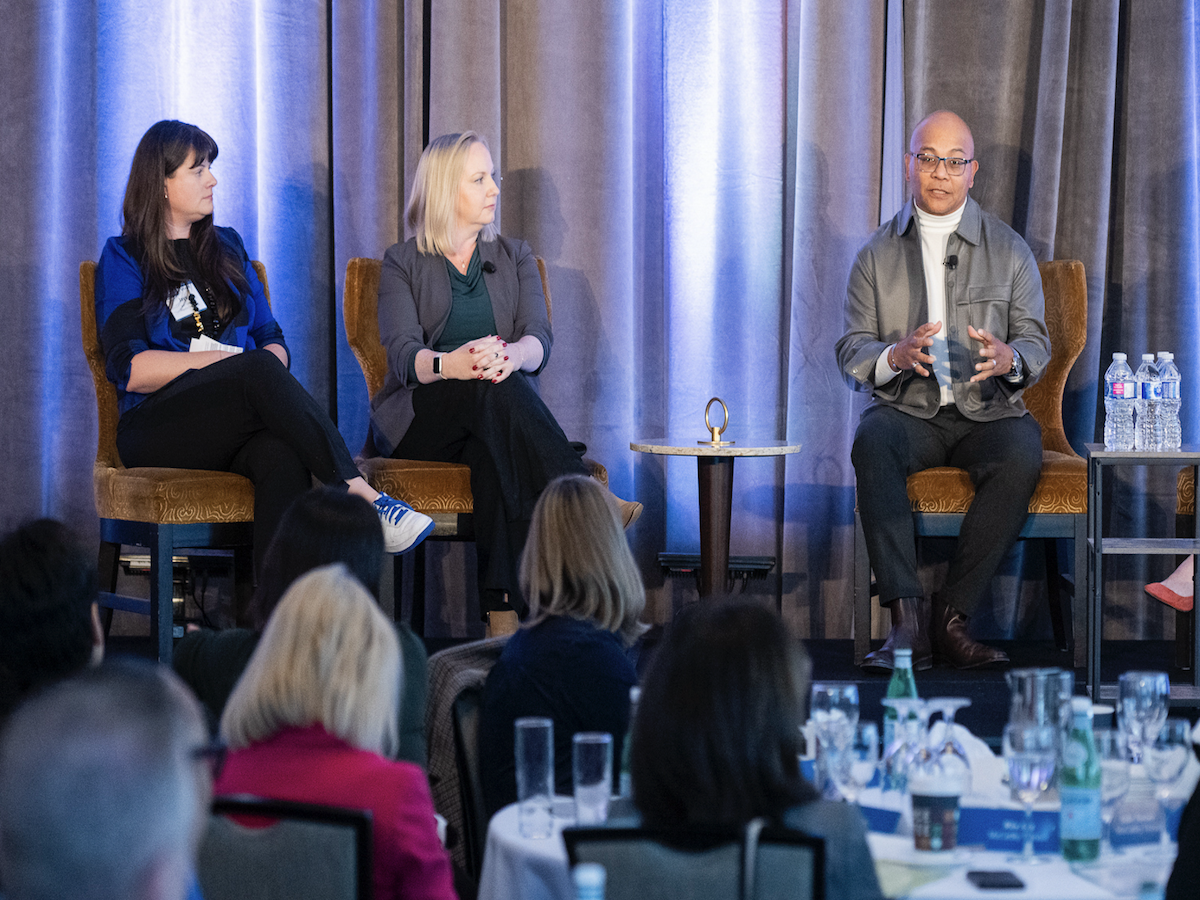

PepsiCo Canada aims to ensure all employees have equitable coverage and access to resources by offering a competitive and flexible benefits program, as well as inclusive policies, said Jaye Calder (pictured left), the company’s manager of pension, benefits and wellness, during a panel discussion at Benefits Canada’s 2024 Healthy Outcomes Conference.
“We’re taking it a step further to make sure we’re enabling access for everyone, reducing administrative barriers and ensuring we have the ultimate amount of employee engagement, [including] community engagement. We’re realizing more and more, wherever we can engage our employees with their health, it helps them take control and focus on their own benefits.”
For Redbrick, creating equitable coverage started with asking employees what they need for whatever stage they’re at in their personal and financial journeys, said Christine Tatham (pictured centre), the organization’s chief people officer.
Read: How Redbrick’s flexible holiday policy is supporting employee well-being, workplace DEI goals
“[We want to] make sure we’re asking for that feedback . . . and we do this annually with a full, comprehensive survey. We also do pulse checks every few weeks [so employees can] share what’s on their mind and what they might need at that stage in their life.”
The Workplace Safety and Insurance Board prefers to take a slightly different approach, according to Rolando Lopez (pictured right), its vice-president of talent acquisition and human resources business services. “We seek equitable coverage as a driver for carrying out our employee value proposition. And our employee value proposition [is simply] that we help employees apply their potential to our purpose.”
When it comes to personalizing benefits, the WSIB decided to take a holistic approach because wellness means different things to different people, he added. “Our benefits and wellness programs are among the most competitive, . . . but we also look at other factors that contribute to the employee value proposition and what people define as wellness. So for us, it’s not just about traditional benefits programs, but looking beyond our core offerings.”
Redbrick looked at its extensive workforce demographics — which includes people of all ages, all backgrounds and who work in different environments — to ensure it was meeting everyone’s unique needs. For example, employees who come into an office were offered a stipend allowing them to pay for things like parking and commuter costs, while employees working from home were given support with home office setups to help equalize things, said Tatham.
PepsiCo Canada launched two new global programs this year. The first is a financial education platform that takes complex ideas around financial literacy and simplifies and personalizes it for employees. The second is a family-building and hormonal health program, which went live in June and has been very positively received by employees, noted Calder.
“It’s a program where our employees can go and build their own family journey and they can have unlimited video calls with specialists. We had a [usage] number we wanted to hit within a year for our employee base and we hit that within 30 days. So there has been an overwhelming response to this program [so far].”
One of the main challenges with equitable coverage, according to Tatham, is people not willing to take the necessary steps, whether it’s because of stigma or some other form of reluctance, so it’s important to communicate the benefits of using the resources available.
Redbrick is rolling out mental-health webinars specifically for men because the company has had feedback from men across the organization that they continue to feel stigmatized if they discuss mental health.
A challenge for PepsiCo is being able to localize global programs, added Calder. “[Vendors] need to have a solid knowledge about our health ecosystem in Canada. Just because a program works fantastically in the U.S., doesn’t mean we can make it work in Canada.”
Read more coverage of the 2024 Healthy Outcomes Conference.
